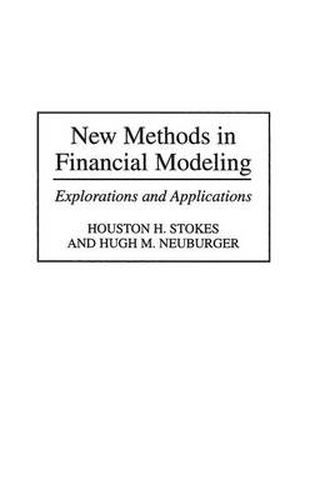Readings Newsletter
Become a Readings Member to make your shopping experience even easier.
Sign in or sign up for free!
You’re not far away from qualifying for FREE standard shipping within Australia
You’ve qualified for FREE standard shipping within Australia
The cart is loading…






The authors present a number of financial market studies that have as their general theme, the econometric testing of the underlying econometric assumptions of a number of financial models. More than 30 years of financial market research has convinced the authors that not enough attention has been paid to whether the estimated model is appropriate or, most importantly, whether the estimation technique is suitable for the problem under study. For many years linear models have been assumed with little or no testing of alternative specification. The result has been models that force linearity assumptions on what clearly are nonlinear processes. Another major assumption of much financial research constrains the coefficients to be stable over time. This critical assumption has been attacked by Lucas (1976) on the grounds that when economic policy changes, the coefficients of macroeconomics models change. If this occurs, any policy forecasts of these models will be flawed. In financial modeling, omitted (possibly non-quantifiable) variables will bias coefficients. While it may be possible to model some financial variables for extended periods, in other periods the underlying models may either exhibit nonlinearity or show changes in linear models. The authors research indicates that tests for changes in linear models, such as recursive residual analysis, or tests for episodic nonlinearity can be used to signal changes in the underlying structure of the market.
The book begins with a brief review of basic linear time series techniques that include autoregressive integrated moving average models (ARIMA), vector autoregressive models (VAR), and models form the ARCH/GARCH class. While the ARIMA and VAR approach models the first moment of a series, models of the ARCH/GARCH class model both the first moment and second moment which is interpreted as conditional or explained volatility of a series. Recent work on nonlinearity detection has questioned the appropriateness of these essentially linear approaches. A number of such tests are shown and applied for the complete series and a subsets of the series. A major finding is that the structure of the series may change over time. Within the time frame of a study, there may be periods of episodic nonlinearity, episodic ARCH and episodic nonstationarity. Measures are developed to measure and relate these events both geographically and with mathematical models. This book will be of interest to applied finance researchers and to market participants.
$9.00 standard shipping within Australia
FREE standard shipping within Australia for orders over $100.00
Express & International shipping calculated at checkout
The authors present a number of financial market studies that have as their general theme, the econometric testing of the underlying econometric assumptions of a number of financial models. More than 30 years of financial market research has convinced the authors that not enough attention has been paid to whether the estimated model is appropriate or, most importantly, whether the estimation technique is suitable for the problem under study. For many years linear models have been assumed with little or no testing of alternative specification. The result has been models that force linearity assumptions on what clearly are nonlinear processes. Another major assumption of much financial research constrains the coefficients to be stable over time. This critical assumption has been attacked by Lucas (1976) on the grounds that when economic policy changes, the coefficients of macroeconomics models change. If this occurs, any policy forecasts of these models will be flawed. In financial modeling, omitted (possibly non-quantifiable) variables will bias coefficients. While it may be possible to model some financial variables for extended periods, in other periods the underlying models may either exhibit nonlinearity or show changes in linear models. The authors research indicates that tests for changes in linear models, such as recursive residual analysis, or tests for episodic nonlinearity can be used to signal changes in the underlying structure of the market.
The book begins with a brief review of basic linear time series techniques that include autoregressive integrated moving average models (ARIMA), vector autoregressive models (VAR), and models form the ARCH/GARCH class. While the ARIMA and VAR approach models the first moment of a series, models of the ARCH/GARCH class model both the first moment and second moment which is interpreted as conditional or explained volatility of a series. Recent work on nonlinearity detection has questioned the appropriateness of these essentially linear approaches. A number of such tests are shown and applied for the complete series and a subsets of the series. A major finding is that the structure of the series may change over time. Within the time frame of a study, there may be periods of episodic nonlinearity, episodic ARCH and episodic nonstationarity. Measures are developed to measure and relate these events both geographically and with mathematical models. This book will be of interest to applied finance researchers and to market participants.